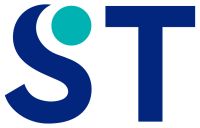- By Laura Re Turner, Future Focus Coaching
- 2 April, 2025
Share by email
In today’s volatile economic landscape, small to medium-sized enterprises (SMEs) in Britain face unprecedented challenges.
By Laura Re Turner, Future Focus Coaching
Fluctuating market demands, evolving consumer preferences, and the ever-present spectre of economic downturn necessitate a shift towards greater adaptability. This is where business agility becomes paramount.
It’s not just about responding to change. The same practices that software development teams have embraced for the last 20 years have become an essential mindset to survive and thrive in today’s world: business agility. Using the same methods, we build habits to sense and respond to change while reducing our exposure to risk by shortening projects and other initiatives.
Business agility, at its core, is the ability to rapidly adapt and respond to change, both internal and external, without compromising productivity or quality.
Recent economic volatility affecting Buckinghamshire
- Inflationary Pressures. Ongoing inflationary pressures continue to strain business operating costs. This is particularly relevant for SMEs reliant on supply chains and energy-intensive operations.
- Interest Rate Fluctuations. Changes in interest rates impact borrowing costs, which can significantly affect SMEs' ability to invest and expand. This has a knock on effect on consumer spending, which affects businesses that rely on consumers for sales.
- There are many pressures on local government spending. Changes to that spending can have a knock on effect to local businesses that supply services to the council, or that rely on council-provided infrastructure.
- The government raising employer National Insurance while lowering the threshold in April 2025. To mitigate the impact, they have also significantly expanded the Employment Allowance, supporting businesses, especially smaller ones, and encouraging employment.
- Global and domestic supply chain disruptions, influenced by geopolitical events, can create unpredictability in material costs and availability.
Incremental Delivery and Risk Management
One of the cornerstones of Agile development is incremental delivery. Whether or not your business is a technology business, the style of planning is geared toward reducing planning horizons to protect ourselves from volatility in the external business environment (i.e. Political, Economic, Social, Technological, Legal, and Environmental - or PESTLE).
Now we’re into the area of business agility. Instead of embarking on massive, monolithic projects with distant deadlines, we break down work into smaller, manageable chunks, delivered incrementally. When we need to change, we’re not left with investment in a project that is still months from completion.
Shorter planning horizons also allow us to significantly improve the predictability of when new initiatives will deliver, and allow us early return on investment. This reduces the likelihood of delivering a product or service that misses the mark.
For example, a small e-commerce business looking to launch a new product line could begin with a limited release to a select group of customers. Based on feedback and user data, the product can be refined, and the marketing strategy adjusted before a full-scale launch. This iterative approach, supported by the Agile Business Consortium's focus on customer-centricity, minimises the risk of investing heavily in a product that fails to resonate with the target audience.
Empowered Teams and Enhanced Risk Identification
Agile methods empower development teams, fostering a culture of collaboration, transparency, and shared responsibility. This empowerment stems from the cross-functional nature of Agile teams. Individuals with diverse skills and expertise work together, bringing different perspectives and insights to the table. This collaborative environment facilitates open communication and knowledge sharing, enabling teams to identify potential risks and develop effective mitigation strategies. Empowered teams are crucial for effective risk management in agile environments.
For SMEs, this translates to creating cross-functional teams that are responsible for specific projects or initiatives. These teams should be given the autonomy to make decisions and implement solutions, fostering a sense of ownership and accountability. Regular communication and feedback loops, as recommended by the Agile Business Consortium, ensure that potential risks are identified and addressed promptly.
Applying Agile Principles to Your SME
Implementing business agility requires a cultural shift, not just a change in processes. Here are some practical steps SMEs can take, based on the now well-known principles of the Manifesto for Agile Software Development, and adopted by over half a dozen different Agile methods in various forms.
- Establish a culture of experimentation. Most organisations do this by implementing small, controlled experiments called MVPs - minimum viable products - to test new ideas and adapt to feedback from the market.
- Facilitate regular retrospectives at the team and organisational level to reflect on past performance, identify areas for improvement, and adapt strategies accordingly.
- Focus on delivering value to customers in timeboxes of 2 to 4 weeks each, on a regular cadence, to create focus and build a habit of finishing what we’ve started, as close as possible to the time we started it. This is nothing more than breaking down work systematically, delivering the highest-value features first, in small chunks, and completely. Many organisations say they prioritise work, but we see the payoff when we combine prioritisation with incremental delivery, and being disciplined about finishing what we start, as close as possible to the time that we start something.
- Visualise bottlenecks with value stream maps and Kanban boards to improve processes.
- Create cross-functional teams that are empowered to make decisions and take ownership of their work. Ensure that teams have the necessary skills and resources to achieve their goals.
- Create feedback loops with customers and stakeholders. Use that data to drive decisions. Customer surveys are good, A/B testing is better.
By embracing business agility, SMEs in Britain can navigate the uncertainties of the modern business environment, enhance their resilience, and achieve sustainable growth. It's about building a culture that values adaptability, collaboration, and continuous improvement, enabling your business to thrive in a constantly changing world.
About the author, Laura Re Turner:
Laura Re Turner is an accredited coach, trainer, and facilitator who works with leaders and teams to develop an Agile mindset, behaviours, and the skills to thrive through change. Laura is a reviewer for the annual Agile Business Awards, sponsored by the Agile Business Consortium, and is the author of Becoming Agile: Coaching Behavioural Change for Business Results (Open University Press, 2021). Before becoming a coach, Laura delivered enterprise software projects as a project and programme manager, technology consultant, and software developer.
Get in touch with Laura with ideas for follow-up articles. Email [email protected], call 07809 890 669, or connect on LinkedIn.






